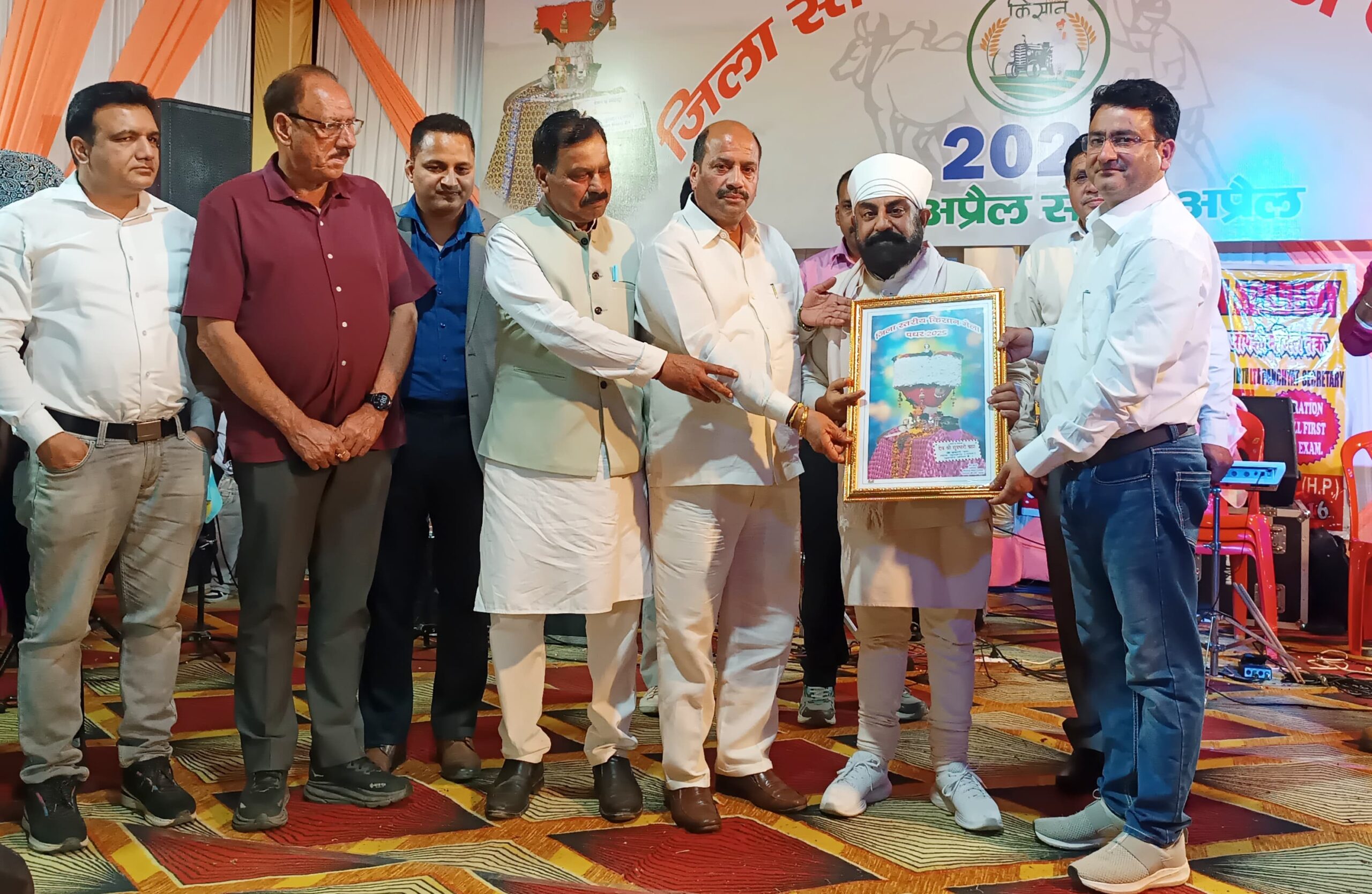World Pulses Day: Celebrating the Nutritional and Sustainable Future of Pulses in Himachal Pradesh. Dr. Tara Devi Sen.
Shimla:
Every year, February 10th is observed as World Pulses Day to highlight the vital role pulses play in food security, nutrition, and sustainable agriculture. Pulses, which include lentils, chickpeas, kidney beans, and various indigenous legumes, are a powerhouse of nutrients. Rich in protein, fiber, vitamins, and minerals, they contribute significantly to a balanced diet. Additionally, pulses contribute to maintaining soil fertility due to their nitrogen-fixing ability, promoting environmental sustainability.
The Cultural and Agricultural Significance of Pulses in Himachal Pradesh.
Himachal Pradesh, with its diverse agro-climatic conditions, is home to many traditional and wild pulses. Some of these pulses are known for their Geographical Indication (GI) status, highlighting their unique regional identity. These pulses are deeply embedded in local traditions, fairs, and festivals and form an integral part of traditional Himachali cuisine.
Among them, black gram (mash or urad dal) holds significant cultural importance and is a key ingredient in popular dishes such as badi, sepu badi, badana, bhalla, khichdi, siddu, and kachori. Rajma (kidney beans) is renowned for its distinct taste and high nutritional value, while kulthi (horse gram) is particularly valued for its benefits in kidney health and digestion. Vigna vexillata (wild lobia), though less known, is a drought-resistant pulse traditionally used in rural areas. Promoting these wild and traditional pulses can help in sustainable farming and improved nutrition.
Diversity of Pulses in Himachal Pradesh.
Due to its diverse agro-climatic conditions, Himachal Pradesh cultivates a variety of traditional pulses. Some of the major pulses grown in the region include:
Rajma (Phaseolus vulgaris): Rajma grown in Chamba, Kullu, Kinnaur, Karsog, Barot, Janjehli, and Mandi is renowned for its excellent quality and rich flavor, giving it a distinct regional identity. Bharmaur Rajma, a rare and high-quality variety cultivated in high-altitude regions, is well-known for its nutritional benefits. It is widely used in rajma chawal, madra, and various vegetable preparations.
Mash (Vigna mungo) – Urad: This pulse is found abundantly in mid-hill regions and is a key ingredient in traditional dishes like Sepu Badi, Bada, Bhalla, Kachori, and Siddu. It is rich in protein and iron, making it beneficial for muscle health.
Kulthi (Macrotyloma uniflorum) – Horse Gram: A significant medicinal pulse, Kulthi is considered beneficial for kidney health and digestion. It is widely grown in Karsog and Barot regions and is used in soups, khichdi, and dal preparations.
Moth (Vigna aconitifolia) – Moth Bean: A drought-resistant pulse primarily cultivated in the dry regions of Kangra and Mandi, it is a vital source of protein for local communities. It is consumed as dal, sprouts, and cooked vegetables.
Lobia (Vigna unguiculata) – Cowpea/Rongi: This highly nutritious pulse is cultivated in various parts of Himachal Pradesh. Due to its high protein content, it is a valuable nutritional source. It is commonly used in vegetable preparations, madra, and dal dishes.
Soybean (Glycine max) – Soybean: Grown in the hilly regions of Himachal Pradesh, soybean provides protein and essential nutrients. It is used in tofu, kachori, soy flour, and dal preparations.
Kol (Vigna radiata var. sublobata): A variety similar to Rongi dal, Kol is grown in hilly regions. In Himachal Pradesh, it is used in traditional dishes like Kol ka Khatta. It is rich in protein and fiber, making it highly beneficial for health.
Moong Dal (Vigna radiata): Moong dal is a highly nutritious pulse rich in protein, fiber, vitamins, and minerals. It is easily digestible, making it an essential part of a healthy diet. Sprouted moong dal is an excellent source of nutrition and energy. It is commonly used in dishes like khichdi, badi, cheela, and halwa.
Black Chickpea (Cicer arietinum) – Black Gram: This pulse is rich in protein, fiber, iron, and carbohydrates, providing both energy and nutrition. In Himachal Pradesh, it is used in traditional dishes like Chholia (Chana Khatta), sprouted chana, and chana masala. Due to its low glycemic index, it is beneficial for diabetic patients. Additionally, it is a drought-resistant crop that helps improve soil fertility.
Despite their importance, these indigenous pulses face a decline due to shifting dietary preferences, the introduction of hybrid crops, and inadequate market incentives for traditional farmers.
Wild Pulses with Domestication Potential.
Himachal Pradesh is home to several wild pulses that have yet to be commercially utilized, but they hold immense potential for food security, soil fertility, and boosting the local economy.
1. Bhatt (Dolichos biflorus) – Horse Gram
Found in: High-altitude mountainous regions
Characteristics: Rich in protein, grows well in harsh climatic conditions
Local Uses: Consumed as dal and porridge
2. Moru (Vigna spp.)
Found in: Forests and lower hills
Characteristics: Part of traditional diets but not yet mainstream in cultivation
Local Uses: Can be incorporated into traditional dishes
3. Bauhinia Vahlii Seeds/Taur (Bauhinia vahlii) – Camel’s Foot Creeper
Found in: Subtropical forests
Characteristics: High protein content, potential as an alternative pulse
Local Uses: Seeds are roasted and eaten or ground into flour
4. Vicia faba – Broad Bean
Found in: Cold climatic regions
Characteristics: Highly nutritious and rich in fiber
Local Uses: Consumed as fresh pods or dried pulses
5. Soodu (Lathyrus sativus) – Grass Pea
Found in: Wild areas and cultivated in some regions
Characteristics: Drought-resistant and highly adaptable
Local Uses: Used in making dal
6. Banwari (Vigna vexillata) – Wild Cowpea
Found in: Wild areas, with some cultivation in certain places
Characteristics: Drought-resistant, disease-resistant, and enhances soil fertility
Local Uses: Used as animal fodder and occasionally as food in some areas
Promoting Traditional and Wild Pulses.
To conserve and increase the consumption of these valuable pulses, a multifaceted approach involving research, policy support, awareness campaigns, and their integration into agroforestry systems is essential. Research and development efforts should focus on improving their yield, disease resistance, and market potential, while agricultural universities must prioritize traditional and wild pulses to enhance their profitability. Government support through financial assistance, GI tagging, and improved marketing channels can further promote their cultivation. Additionally, awareness campaigns should educate farmers and consumers about their nutritional and environmental benefits. Integrating traditional farming techniques with modern agricultural systems will also help boost their usage. By adopting these measures, we can revive traditional food practices and ensure that future generations benefit from these nutritious and sustainable pulses.
Celebrating World Pulses Day.
World Pulses Day reminds us that pulses are not just food but an integral part of our ecosystem and cultural heritage. Recognizing, conserving, and promoting the traditional and wild pulses of Himachal Pradesh is a crucial step toward sustainable agriculture, nutrition security, and rural empowerment.
Let us use this occasion to commit to healthier diets and support local farmers, helping preserve our traditional food systems while moving toward a sustainable future.




